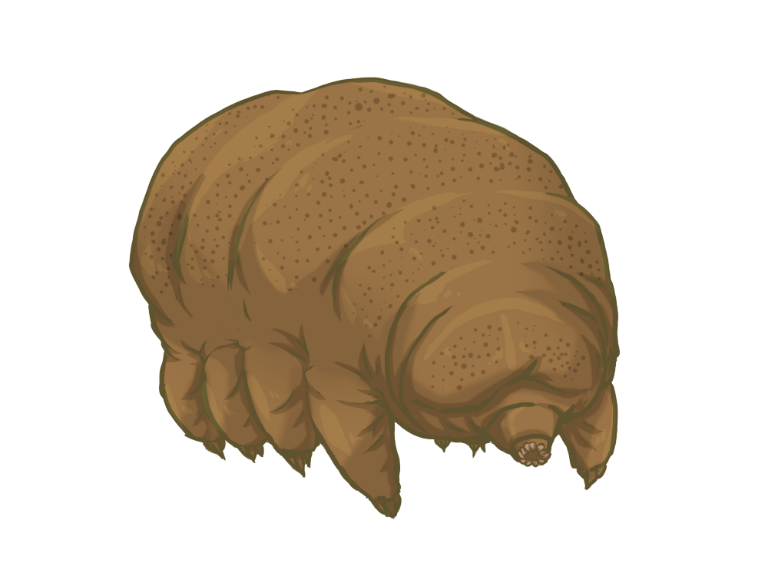
Tardigrade // Database Center for Life Science(TOGO TV) The word tardigrade means “slow stepper”.
Friends of the Bend: Tardigrades
By: Ashley BergeronStaff-Writer
Tardigrades, also known as moss pigs and water bears, are a phylum of miniature invertebrates with fused segments. The majority of tardigrade species live in the water film surrounding mosses and damp soil, but they can also live in freshwater mosses or algae and marine substrate.
There are about 1100 tardigrade species alive. Due to their size, it is hard to find out the population size of any given species. There is currently no record of how many species of tardigrades are in Indiana, but the state is home to various hospitable environments for them.
Tardigrades have a non-chitinous exoskeleton that they molt throughout their life. Due to this characteristic, they are grouped with phyla such as Nemotoda (ringworms) and Arthopods (crustaceans, insects, spiders, millipedes, etc.).
The diet of tardigrades can consist of plants, algae, animals like nematodes, and even other tardigrades.
Tardigrades are known to survive extreme circumstances such as lack of oxygen, high pressure, boiling alcohol, and more. They are able to do this due to cryptobiosis: a state where metabolic activities stop due to environmental conditions. They basically enter a death-like state, which is reversible once the environment conditions are ideal.
Tardigrades can be found everywhere, including Antarctica. There is a way to look at tardigrades from your backyard or local park! You’ll need a dissecting microscope, a petri dish and a pipette (if you want to look at tardigrades under a compound microscope).
You’ll want to collect moss or lichens, trying not to get a lot of dirt or debris with it, as this makes it harder to see the tardigrades. The moss or lichen can be from anywhere: your roof, sidewalk, lawn, driveway or rocks. You will not need a big piece.
After picking up some moss or lichen, you’re going to need to soak it up with water. Rain water is preferred, but tap water will also work. Let it soak overnight. After it is done soaking, you will need to drain the water out of the dish or move the moss or lichen into another dish. Hold the moss or lichen over a petri dish and squeeze. The water in the petri dish will be used to look for tardigrades.
You’ll put the petri dish under the dissecting microscope and look. If there are any tardigrades (sometimes there won’t be any), you’ll see the little animals crawl through the moss or lichen.
If you want to follow scientists studying these amazing creatures, you can find Dr. Thomas C. Boothby of the University of Wyoming and his fellow researchers at boothbylab.org.